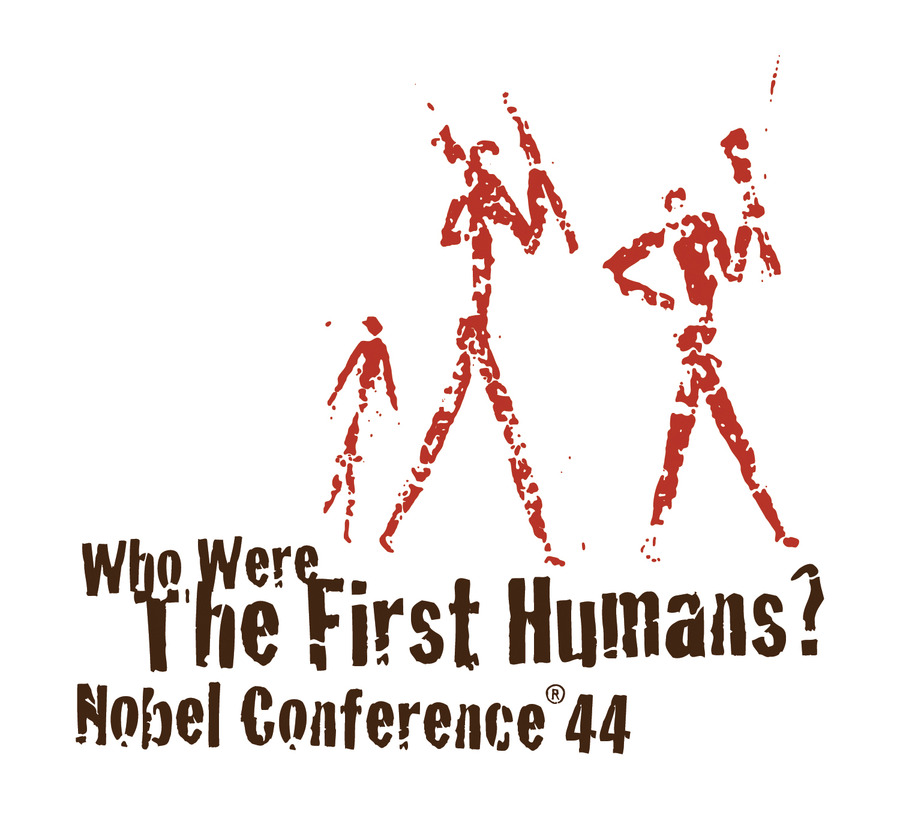Who Were the First Humans?, the 44th Nobel Conference at Gustavus Adolphus College, Oct. 7-8, will trace human history from its origins in Africa to modern times. Using modern genetic techniques as well as examinations of fossils and artifacts, world renowned scientists will explore how early humans spread around the world and how human behavior changed in the process.
“The annual Nobel conferences are noted for timely and constructive discussions of important scientific and social issues,” said Nobel Conference Director Tim Robinson. “During the last couple of decades, biologists, climatologists, geneticists, mathematicians, and psychologists, among others, have been adding to the scientific database that now allows us to answer some vital questions about early human life.”
For more than four decades, Gustavus has organized and hosted the two-day Nobel Conference, which draws about 6,000 people to the college campus in St. Peter, Minn. The conference links a general audience, including high school students and teachers, with the world’s foremost scholars and researchers in discussion centered on contemporary issues relating to the natural and social sciences.
The Nobel Conference is the first ongoing education conference in the United States to have the official authorization of The Nobel Foundation in Stockholm, Sweden.
Executive Director of The Nobel Foundation Michael Sohlman said, “The Nobel Foundation proudly supports Gustavus Adolphus College and its annual Nobel Conference, which this year delves into the international interest in the human ancestry.”
2008 Nobel Conference presenters and their coinciding lecture titles include:
- Curtis Marean, Professor of Anthropology, Institute of Human Origins, Arizona State University, “The African Evidence for the Origins of Modern Human Behavior”;
- Svante Paabo, Director, Max Planck Institute of Evolutionary Anthropology, Leipzig, Germany, “What We Can Learn from Studying Ancient DNA”;
- Marcus Feldman, Director, Morrison Institute for Population and Resources Studies, Stanford University, “The History of Migration and Selection Seen through the Human Genome”;
- Dennis Stanford, Head, Division of Archaeology, Smithsonian National Museum of Natural History, “The Ice-Age Discovery of the America: Constructing an Iberian Solution”;
- Robin Dunbar, Director, Institute of Cognitive and Evolutionary Anthropology, Oxford University, “Mind the Gap: Why Humans Aren’t Just Great Apes”;
- J. Wentzel van Huyssteen, Professor of Theology and Science, Princeton Theological Seminary, “Human Origins and Religious Awareness — An Interdisciplinary Challenge for Theology?”
The conference will also showcase Minnesota archaeology with two presentations by state archaeologist Scott Anfinson and University of Minnesota Anthropologist Guy Gibbon as part of a forum on the “Peopling of Minnesota.” The forum will begin at 6:30 p.m. Tuesday, Oct. 7 in the Lund Center Arena. This exhibit will also feature spear throwing and flintknapping demonstrations as well as a collection of projectile points found at Minnesota archaeological sites.
More information about the conference, including additional information on each of the speakers and ticket information is available online at www.gustavus.edu/nobelconference.

Leave a Reply